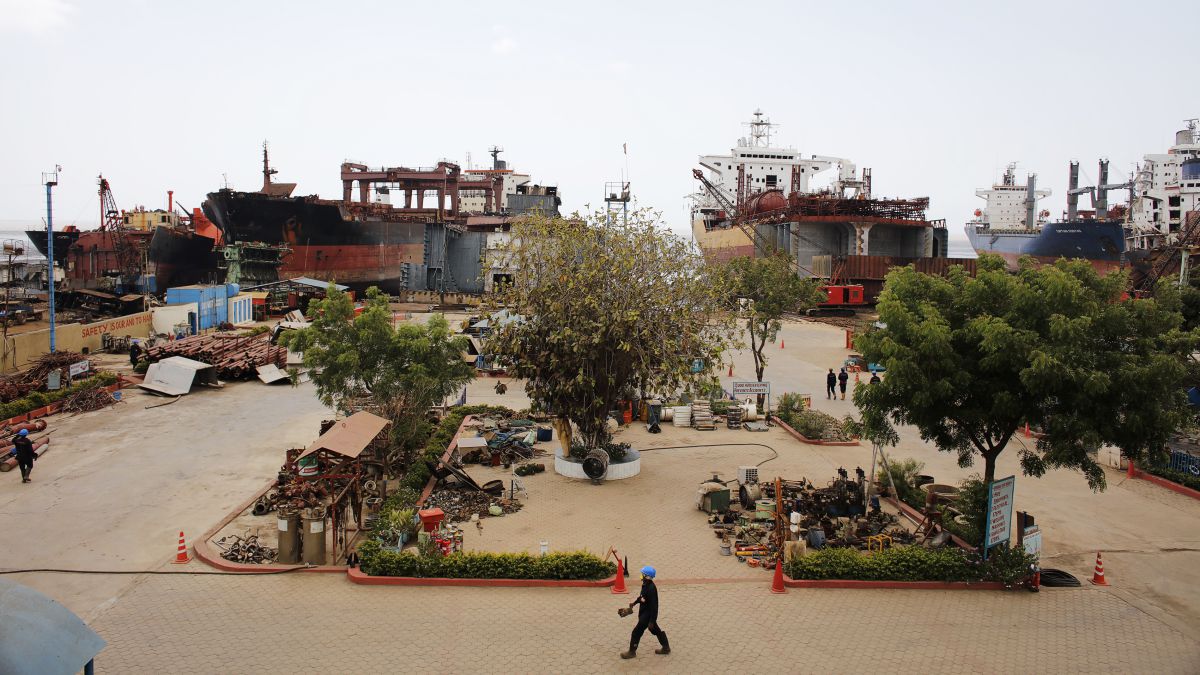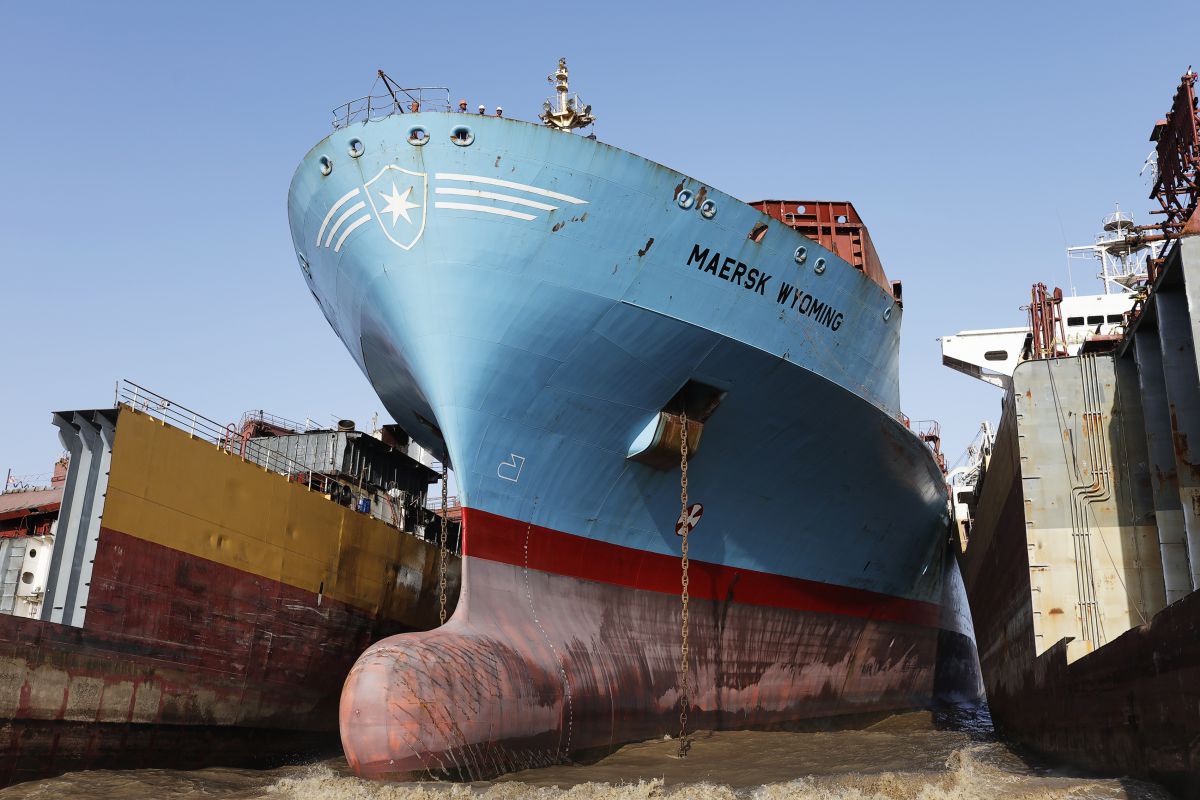Maersk and Advocates Debate Shipbreaking Options
.png) Seventy percent of the world's obsolete ships are scrapped at beaching yards in South Asia, but only a handful of these facilities are certified to the standards of the Hong Kong Convention (HKC), which requires measures to ensure worker safety and reduce environmental impact. Annette Stube, Head of Group Sustainability for Maersk Group, intends to support these upgraded yards – to demonstrate to shipowners that improved recycling standards are cost-effective, even in a down market, and to spread the word that this is an important part of running a responsible business. “It is really an open window to start changing the industry,” she says.
Seventy percent of the world's obsolete ships are scrapped at beaching yards in South Asia, but only a handful of these facilities are certified to the standards of the Hong Kong Convention (HKC), which requires measures to ensure worker safety and reduce environmental impact. Annette Stube, Head of Group Sustainability for Maersk Group, intends to support these upgraded yards – to demonstrate to shipowners that improved recycling standards are cost-effective, even in a down market, and to spread the word that this is an important part of running a responsible business. “It is really an open window to start changing the industry,” she says.
Maersk expects to scrap more vessels in coming years as new, efficient technology and tighter emissions standards make the older ships in its fleet less competitive. The firm estimates the cost of demolishing a ship at yards in Turkey and China at one to two million dollars more than at a recycler in Alang (scrap values are higher at South Asian yards). While this makes the Indian yards better for the bottom line, Stube says that Maersk is a firm believer in responsible business and would like to set an example for how the industry should handle end-of-life there. Maersk has worked with four leading Indian ship recyclers certified by ClassNK to the HKC standard, and hopes that in time they will also be certified to the newly written EU Ship Recycling Regulation (SRR). These yards are more expensive than their unaudited competitors, Stube says, but she believes that paying for better practices is an important step towards encouraging reform. “Why would other yards start investing if they don't see money coming in?” she says.

However, not all agree with Maersk's approach. Advocates with the industry watchdog NGO Shipbreaking Platform claim that even these upgraded yards have deficiencies, including the dispersal of paint chips and slag into the intertidal zone; improper downstream disposal of toxic waste; cracked concrete areas for final demolition; poor accommodations for workers; and an absence of proper environmental impact assessments and permits, issued under the limited abilities of the local government. “We believe Maersk should invest in a new and modern ship recycling facility off the beach in India (or elsewhere) instead of trying to improve a method which will never reach the highest standard . . . we are disappointed that after years of investing and improving ship recycling in China they suddenly endorse beaching again for the sake of profit,” said Patrizia Heidegger, the group's executive director.
Stube disputes these allegations. Maersk will require yards to drop nearly all cut blocks into the interior of the hull in order to minimize contamination in the intertidal zone, she says. It has been selective in picking partners at Alang, and only fully permitted yards will receive its ships; and, as for impermeable surfaces, concrete gets cracked in all parts of the world, says Stube, not just at Alang, and if paved cutting areas are damaged, they should be properly repaired. Further, Maersk intends to ship all toxic waste that cannot be properly handled locally back to the EU for disposal (a move Heidegger supports). Maersk's recycling contracts also contain a “stop work” clause permitting a full-time, on-site company representative to halt operations if any non-compliant condition is observed. “We have a man on the ground during all working hours . . . it's a partnership,” Stube said.

Despite all of the careful preparations, Stube says that there is still one main sticking point with European regulators, who will soon have to approve yards for the disposal of EU-flagged ships. EU officials recently visited Maersk's partners in Alang, and their only remaining objection to their listing is the manner of the felling of the ship's bow and the stern – the only two sections which cannot practically be dropped into the interior of the hull. The EU SRR requires that blocks be cut on an “impermeable floor,” whether a properly drained and sealed area onshore or on the bottom of the hull itself. Under these rules, blocks cannot be dropped into the intertidal zone, even if fully cleaned beforehand; they must be lifted clear. Until the bow and stern can be removed by another method, it appears that EU approval for the yards will not be forthcoming, at least under regulators’ current interpretation.
Ultimately, regulation aside, Stube believes that upgrading beaching yards and recruiting other shipowners to use them is a key component of Maersk's intention to practice responsible business – just like its anti-corruption efforts, its work to expand trade in the developing world and its investments in reducing carbon dioxide emissions. And while Maersk Group remains committed to investing in Alang, she says that it is always pleased to have an expanded set of commercially viable options – which could soon include access to American ship recyclers, some of whom have entered talks with EU regulators and the U.S. State Department, EPA and Maritime Administration on joining the EU SRR list. “The number of U.S. Navy vessels scrapped in the U.S. has been decreasing, therefore the recycling of commercial vessels is of great interest to U.S. recyclers. Both the U.S. recyclers and the U.S. authorities have . . . started a dialogue with the European Commission on the issue,” says Heidegger.
The opinions expressed herein are the author's and not necessarily those of The Maritime Executive.
